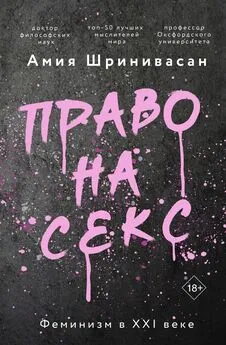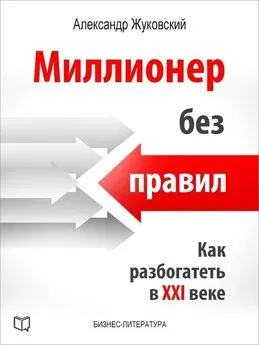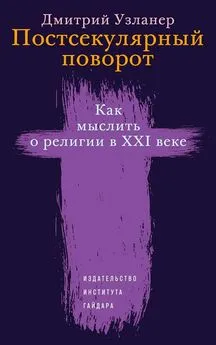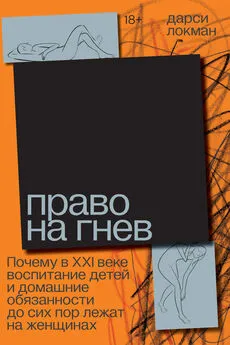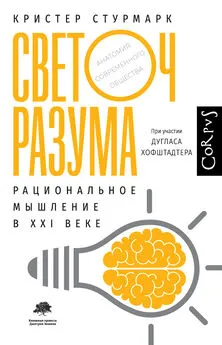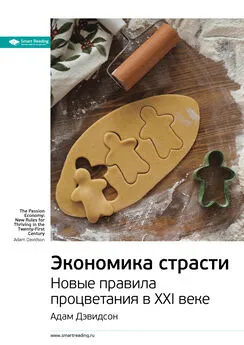Амия Шринивасан - Право на секс. Феминизм в XXI веке
- Название:Право на секс. Феминизм в XXI веке
- Автор:
- Жанр:
- Издательство:неизвестно
- Год:неизвестен
- ISBN:978-5-17-148640-2
- Рейтинг:
- Избранное:Добавить в избранное
-
Отзывы:
-
Ваша оценка:
Амия Шринивасан - Право на секс. Феминизм в XXI веке краткое содержание
Мы не знаем будущего секса, но, возможно, мы могли бы его представить с помощью Амии Шринивасан. Сексуальные домогательства, права женщин и мужчин, этика, порнография, проституция, секс на работе, университете, секс и государственная власть – нет ничего другого, что было бы одновременно столь личным и общественным, и где вопросы удовольствия и этики могли бы столь резко расходиться.
После движения #MeToo многие зафиксировали согласие как основу сексуальной справедливости. Однако согласие – это грубый инструмент. Чтобы понять секс во всей его сложности – его глубокую многогранность, его отношение к полу, социальному классу, национальной принадлежности и власти – нам нужно выйти за рамки «да» и «нет», желаемого и нежелательного. «Право на секс. Феминизм в XXI веке» – это провокация и обещание, преображающие многие из наших самых насущных проблем и задающие вопрос, что же значит быть свободным.
В формате PDF A4 сохранен издательский макет.
Право на секс. Феминизм в XXI веке - читать онлайн бесплатно ознакомительный отрывок
Интервал:
Закладка:
19
‘The National Register of Exonerations’.
20
‘Perpetrators of Sexual Violence: Statistics’, RAINN: https://www.rainn.org/statistics/perpetrators-sexual-violence
21
Samuel R. Gross, Maurice Possley and Klara Stephens, ‘Race and Wrongful Convictions in the United States’, National Registry of Exonerations (2017): http://www.law.umich.edu/special/exoneration/Documents/Race_and_Wrongful_Convictions.pdf, p. iii.
22
Bernadette Rabuy and Daniel Kopf, ‘Prisons of Poverty: Uncovering the pre-incarceration incomes of the imprisoned’, Prison Policy Initiative (9 July 2015): https://www.prisonpolicy.org/reports/income.html
23
Цит. по Mia Bay, ‘Introduction’, in Ida B. Wells, The Light of Truth , ed. Mia Bay (Penguin Classics, 2014): xix-xxxi, p. xxv.
24
Ida B. Wells, ‘A Red Record. Tabulated Statistics and Alleged Causes of Lynchings in the United States, 1892-1893-1894’ [1895], in Wells, The Light of Truth : 220–312.
25
Sheila Weller, ‘How Author Timothy Tyson Found the Woman at the Center of the Emmett Till Case’, Vanity Fair (26 January 2017): https://www.vanityfair.com/news/2017/01/how-author-timothy-tyson-found-the-woman-at-the-center-of-the-emmett-till-case
26
Для изучения ложных обвинений в контексте колониализма смотри: Amirah Inglis, The White Women’s Protection Ordinance: Sexual Anxiety and Politics in Papua (Chatto and Windus, 1975); Norman Etherington, ‘Natal’s Black Rape Scare of the 1870s’, Journal of Southern African Studies , vol. 15, no. 1 (1988): 36–53; John Pape, ‘Black and White: The “Perils of Sex” in Colonial Zimbabwe’, Journal of Southern African Studies , vol. 16, no. 4 (1990): 699–720; Vron Ware, Beyond the Pale: White Women, Racism and History (Verso, 1992); Jenny Sharpe, Allegories of Empire: The Figure of Woman in the Colonial Text (University of Minnesota Press, 1993); Alison Blunt, ‘Embodying war: British women and domestic defilement in the Indian “Mutiny”, 1857–8’, Journal of Historical Geography , vol. 26, no. 3 (2000): 403–428; David M. Anderson, ‘Sexual Threat and Settler Society: “Black Perils” in Kenya, c. 1907–30’, The Journal of Imperial and Commonwealth History , vol. 38, no. 1 (2010): 47–74; and David Sheen, ‘Israel weaponizes rape culture against Palestinians’, The Electronic Intifada (31 January 2017): https://electronicintifada.net/content/israel-weaponizes-rape-culture-against-palestinians/19386
27
В США черных мужчин в семь раз чаще ложно осуждают в убийстве, чем белых (Gross et al., ‘Race and Wrongful Convictions’, p. 4). Чернокожим мужчинам дают на 20 % бо. льший срок, чем белым чем белых за те же преступления (Joe Palazzolo, ‘Racial Gap in Men’s Sentencing’, The Wall Street Journal (14 February 2013): https://www. wsj.com/articles/SB1000142412788732443200457830446378985 8002). Чернокожим девочкам выносят более суровые приговоры в системе ювенальной юстиции, чем девочкам любой другой расы (Kimberlé Williams Crenshaw, Priscilla Ocen and Jyoti Nanda, ‘Black Girls Matter: Pushed Out, Overpoliced and Underprotected’, African American Policy Forum (2015): https://www.atlanticphilanthropies. org/wp-content/uploads/2015/09/BlackGirlsMatter_Report.pdf, p. 6). Чернокожих мальчиков отстраняют от занятий в школе в три раза чаще, чем белых, а чернокожих девочек – в шесть раз чаще (ibid., p. 16). В Нью-Йорке, где чернокожие составляют 27 % населения, 53,4 % всех женщин и 55,7 % всех мужчин, остановленных полицией, – чернокожие (Kimberlé Williams Crenshaw, Andrea J. Ritchie, Rachel Anspach, Rachel Gilmer and Luke Harris, ‘Say Her Name: Resisting Police Brutality Against Black Women’, African American Policy Forum (2015): https:// www.aapf.org/sayhername, p. 5). Вероятность того, что чернокожего мужчину убьет полиция в 2,5 раза выше, чем у белых мужчин, а у женщин – в 1,4 раза выше (Frank Edwards, Hedwig Lee and Michael Esposito, ‘Risk of being killed by police use of force in the United States by age, race – ethnicity, and sex’, Proceedings of the National Academy of Sciences of the United States of America , vol. 116, no. 34 (2019): 16793–16798).
28
О чернокожих мужчинах, которые поддерживают Бретта Кавано, смотри: Jemele Hill, ‘What the Black Men Who Identify With Brett Kavanaugh Are Missing’, The Atlantic (12 October 2018): https://www. theatlantic.com/ideas/archive/2018/10/why-black-men-relate-brett-kava-naugh/572776/
29
Dan A. Turner, ‘Letter from Brock Turner’s Father’ (2016), доступно по ссылке: https://www.stanforddaily.com/2016/06/08/the-full-letter-read-by-brock-turners-father-at-his-sentencing-hearing/
30
‘Brett Kavanaugh’s Opening Statement: Full Transcript’, The New York Times (26 September 2018): https://www.nytimes.com/2018/09/26/us/poli-tics/read-brett-kavanaughs-complete-opening-statement.html
31
Kate Kelly and David Enrich, ‘Kavanaugh’s Yearbook Page Is “Horrible, Hurtful” to a Woman It Named’, The New York Times (24 September 2018): https://www.nytimes.com/2018/09/24/business/brett-kavanaugh-year-book-renate.html
32
Mollie Hemingway and Carrie Severino, ‘Christine Blasey Ford’s Father Supported Brett Kavanaugh’s Confirmation’, The Federalist (12 September 2019): https://thefederalist.com/2019/09/12/christine-blasey-fords-fa-ther-supported-brett-kavanaughs-confirmation/
33
#ЯЕйВерю
34
Например, смотри: JoAnn Wypijewski, ‘What We Don’t Talk About When We Talk About #MeToo’, The Nation (22 February 2018): https:// www.thenation.com/article/archive/what-we-dont-talk-about-when-we-talk-about-metoo/
35
Emily Yoffe, ‘The Uncomfortable Truth about Campus Rape Policy’, The Atlantic (6 September 2017): https://www.theatlantic.com/educa-tion/archive/2017/09/the-uncomfortable-truth-about-campus-rape-poli-cy/538974/
36
Shulamith Firestone, The Dialectic of Sex (Verso, 2015 [1970]).
37
Angela Y. Davis, Women, Race & Class (Penguin Modern Classics, 2019 [1981]), p. 163. Русский перевод: Анджела Дэвис. Женщины, раса, класс. М.: Прогресс. 1987.
38
Libby Purves, ‘Indian women need a cultural earthquake’, The Times (31 December 2012): https://www.thetimes.co.uk/article/indian-wom-en-need-a-cultural-earthquake-mtgbgxd3mvd
39
О мифе «недоступности» применительно к коренным американкам и представительницам «первых наций» смотри: Andrea Smith, Conquest: Sexual Violence and American Indian Genocide (South End Press, 2005); Jacki Thompson Rand, Kiowa Humanity and the Invasion of the State (University of Nebraska Press, 2008); and Maya Seshia, ‘Naming Systemic Violence in Winnipeg’s Street Sex Trade’, Canadian Journal of Urban Research , vol. 19, no. 1 (2010): 1–17. О том же явлении в Южной Африке писали: Pumla Dineo Gqola, Rape: A South African Nightmare (MF Books Joburg, 2015); and Rebecca Helman, ‘Mapping the unrapeability of white and black womxn’, Agenda: Empowering women for gender equality , vol. 32, no. 4 (2018): 10–21. В Австралии: Ann McGrath, ‘“Black Velvet”: Aboriginal women and their relations with white men in the Northern Territory 1910–40’, in So Much Hard Work: Women and Prostitution in Australian History , ed. Kay Daniels (Fontana Books, 1984): 233–297; Greta Bird and Pat O’Malley, ‘Kooris, Internal Colonialism, and Social Justice’, Social Justice , vol. 16, no. 3 (1989): 35–50; Larissa Behrendt, ‘Consent in a (Neo)Colonial Society: Aboriginal Women as Sexual and Legal “Other”’, Australian Feminist Studies , vol. 15, no. 33 (2000): 353–367; and Corrinne Tayce Sullivan, ‘Indigenous Australian women’s colonial sexual intimacies: positioning indigenous women’s agency’, Culture, Health & Sexuality , vol. 20, no. 4 (2018): 397–410. Историк Памела Скалли отмечает «любопытную особенность историографии: авторы в целом были больше озабочены расплывчатыми мифами о насилии над белыми женщинами со стороны чернокожих, а не тем, что колониализм санкционировал повсеместное изнасилование чернокожих женщин белыми мужчинами» (Pamela Scully, ‘Rape, Race, and Colonial Culture: The Sexual Politics of Identity in the Nineteenth-Century Cape Colony, South Africa’, The American Historical Review , vol. 100, no. 2 (1995): 335–359, p. 337).
40
Scully, ‘Rape, Race, and Colonial Culture’, pp. 335ff.
41
Carolyn M. West and Kalimah Johnson, ‘Sexual Violence in the Lives of African American Women’, National Online Resource Center on Violence Against Women (2013): https://vawnet.org/sites/default/files/materials/ files/2016-09/AR_SVAAWomenRevised.pdf, p. 2.
42
Joanna Bourke, Rape: A History from 1860 to the Present Day (Virago, 2007), p. 77.
43
Rebecca Epstein, Jamilia J. Blake and Thalia González, ‘Girlhood Interrupted: The Erasure of Black Girls’ Childhood’, Georgetown Center on Poverty and Inequality (2017): https://ssrn.com/abstract=3000695
44
Kimberlé Williams Crenshaw, ‘I Believe I Can Lie’, The Baffler (17 January 2019): https://thebaffler.com/latest/i-believe-i-can-lie-crenshaw
45
В США, по оценкам, 41,2 % неиспаноязычных чернокожих женщин в течение жизни страдают от физического насилия со стороны сексуального партнера, по сравнению с 30,5 % неиспаноязычных белых женщин. Среди коренных американок это 51,7 %, а испаноязычных – 29,7 % (Matthew J. Breiding, Sharon G. Smith, Kathleen C. Basile, Mikel L. Walters, Jieru Chen and Melissa T. Merrick, ‘Prevalence and Characteristics of Sexual Violence, Stalking, and Intimate Partner Violence Victimization – National Intimate Partner and Sexual Violence Survey, United States, 2011’, Center for Disease Control and Prevention: Morbidity and Mortality Weekly Report , vol. 63, no. 8 (2014): https://www.cdc.gov/mmwr/preview/mmwrhtml/ ss6308a1.htm, table 7). Чернокожих женщин убивают в три раза чаще, чем белых американок (Emiko Petrosky, Janet M. Blair, Carter J. Betz, Katherine A. Fowler, Shane P.D. Jack and Bridget H. Lyons, ‘Racial and Ethnic Differences in Homicides of Adult Women and the Role of Intimate Partner Violence – United States, 2003–2014’, Morbidity and Mortality Weekly Report , vol. 66, no. 28 (2017): 741–746, p. 742).
Читать дальшеИнтервал:
Закладка:
